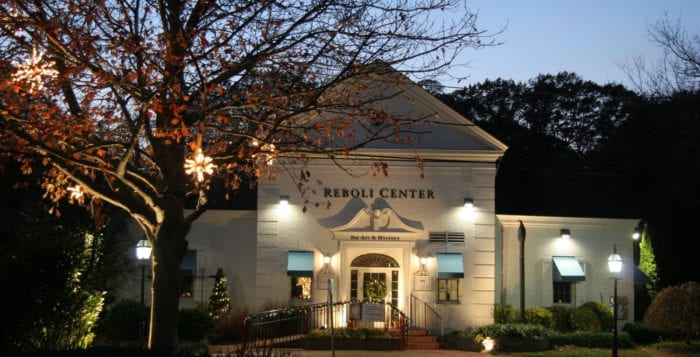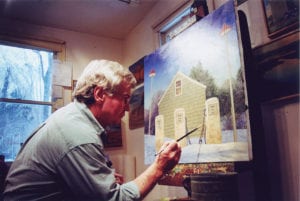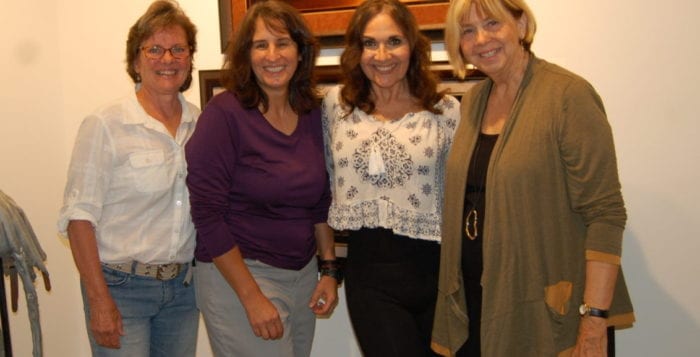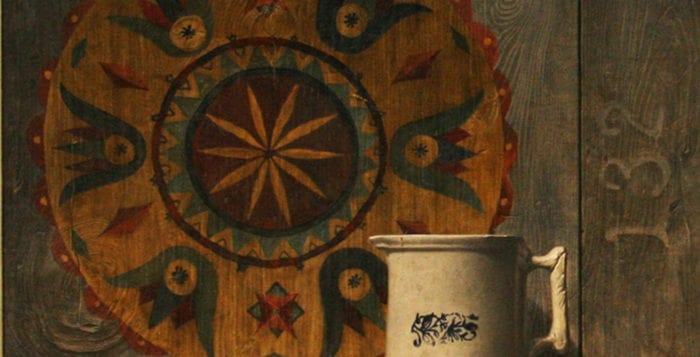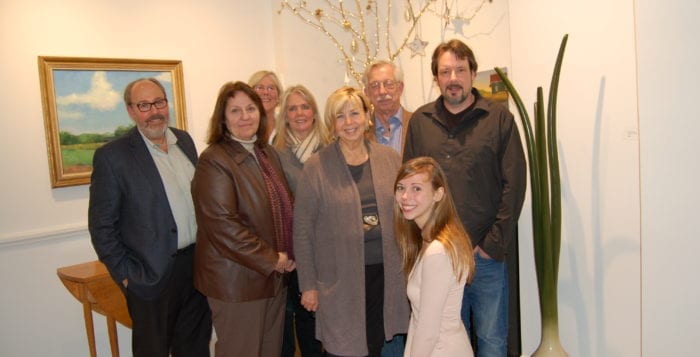By Melissa Arnold
For more than three decades, Joseph Reboli dedicated his life to creating art and sharing it with the world. His vibrant oil paintings, many of which focused on scenes in the Three Village area, were beloved not only here on Long Island but around the world for the way they captured the essence of the places he loved. Reboli’s work has been on display in museums, private collections and homes around the world.
Since its founding in 2016, the Reboli Center for Art and History in Stony Brook has worked to preserve the legacy of its namesake, who died in 2004, while also highlighting the people and places that most inspired him. Its newest exhibit, on display beginning Nov. 1, will focus on one of Reboli’s unique honors: his inclusion in an exhibit at the White House.
“Joe was a very modest guy, but I think he was really honored by this opportunity, and it was one of the highlights of his career,” said Lois Reboli, Joe’s wife of 14 years.
In 2000, the nation’s capital was preparing to mark the 200th anniversary of the White House. To celebrate, the White House Historical Association planned an art exhibit and companion calendar titled White House Impressions: The President’s House Through the Eye of the Artist. The association selected 14 well-respected artists to participate, with one artist representing each of the 13 original colonies and the District of Columbia.
Among the chosen artists were Reboli, who represented New York for the month of March, as well as realist painter Ken Davies of Massachusetts, Reboli’s former professor at the Paier College of Art, representing February.

The other artists were Domenic DiStefano (Pennsylvania, December 1999), Al Alexander (New Jersey, January 2000), Ray Ellis (Georgia, April 2000), John Barber (Virginia, May 2000), Marjorie Egee (Delaware, June 2000), Marilyn Caldwell (Connecticut, July 2000), Tom Freeman (Maryland, August 2000), West Fraser (South Carolina, September 2000), Richard Grosvenor (Rhode Island, October 2000), Carol Aronson-Shore (New Hampshire, November 2000) and Bob Timberlake (North Carolina, December 2000). Carlton Fletcher of the District of Columbia was granted the cover.
“We made the trip down to the White House in 1999, and the artists got to meet with Bill and Hillary Clinton. It was our first trip to the White House, and definitely impressive to us both,” Lois Reboli recalled. “Joe had been in the Army and he was a very patriotic person. A White House photographer walked around with each artist as they decided what they wanted their piece to be — the photographer was the only one allowed to take pictures. Then the artists took the photos home to work.”
Reboli was the only artist in the White House exhibit to choose a point of view from inside the building. His painting, “View from the Red Room,” looks outside to the South Portico with the Jefferson Memorial in the background.
The Red Room has served a variety of purposes in different presidencies, from a music room to a meeting space, the backdrop for official photos and family dinners. First Lady Jackie Kennedy once said that the view from the Red Room was her favorite in the White House because it looked out on the American people.
“When I saw this particular view, I loved the light on the South Portico with the landscape in the background,” Reboli wrote at the time about his choice. “The light’s reflection on the portico contrasted nicely with the dark interior of the room.”
The painting from the Red Room will be on display at the Reboli Center, along with the White House calendar and original work from nine of the 14 artists featured in the 2000 exhibit, said Reboli Center secretary Colleen Hanson.
“This exhibit was a huge undertaking, and took a lot of detective work in some cases. Lois has been working on this exhibit for more than 8 months. It was a search for contacts with the artists of the calendar, communicating back and forth, and then finally getting the artwork. This was a rather complicated exhibit to put together because of the number of artists involved, the time span of an event that happened more than 20 years ago, and the fact that during those 20 years not everyone had stayed put and that deaths had occurred,” Hanson said.
“We wanted to share the work the artists did for the White House as well as some of their original work to give a greater sense of who they were and their artistic interests.”
The White House Calendar exhibit will be on display from Nov. 1 through Jan. 26, 2020 at the Reboli Center for Art and History, 64 Main St., Stony Brook. Participating artists include Al Alexander, Carol Aronson-Shore, Marilyn Caldwell, Ken Davies, Domenic DiStefano, Ray Ellis, West Fraser, Richard Grosvenor and the late Joe Reboli. For more information, call 631- 751-7707 or visit www.rebolicenter.org.

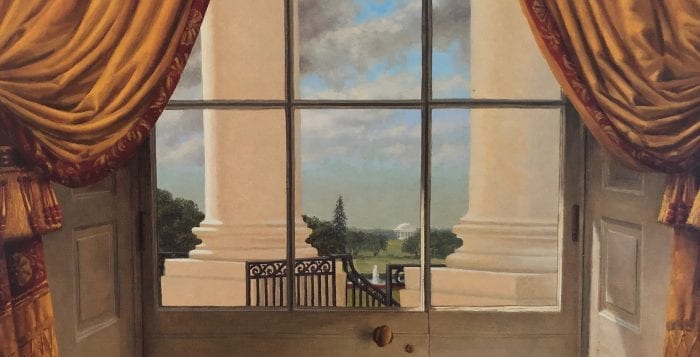
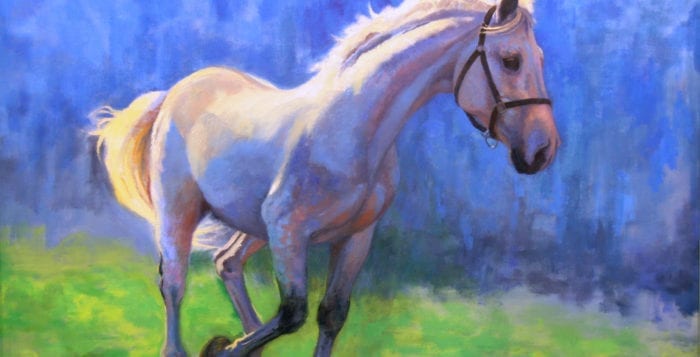
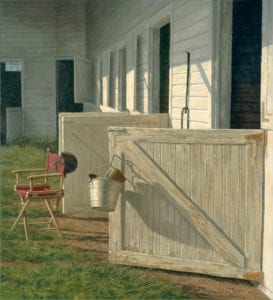

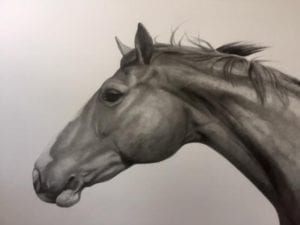
 The center’s history gallery will focus on events and places that include horses in a prominent role. The Smithtown Hunt is the only surviving foxhound hunt on Long Island. While it was originally a live hunt when it was first held in 1900, it is now exclusively a drag hunt. The Old Field Farm was built by Ward Melville in 1931 and continues to be a hot spot for the equestrian community.
The center’s history gallery will focus on events and places that include horses in a prominent role. The Smithtown Hunt is the only surviving foxhound hunt on Long Island. While it was originally a live hunt when it was first held in 1900, it is now exclusively a drag hunt. The Old Field Farm was built by Ward Melville in 1931 and continues to be a hot spot for the equestrian community.